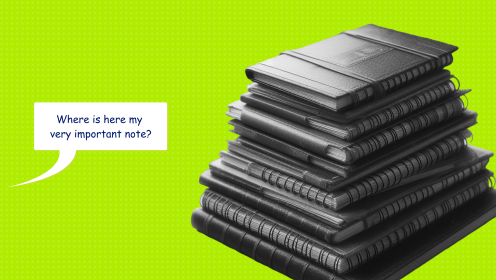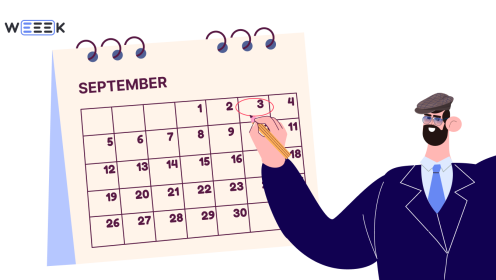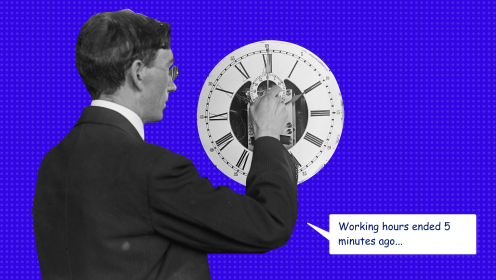We all make lists in a column to not forget anything—this is the first step of many time management techniques. Lists help prioritize using the ABC and 1-3-5 methods, set goals according to SMART, and conduct time-boxing.
During a call, it's easier to jot down ideas and thoughts in a list, and then decompose, assign a date, and apply other techniques to turn a quick note into a smart task. Finally, often it's simply a to-do list that helps plan the day and not forget to buy milk for home.
Well, digital To-Do List applications are the modern replacements for notes on the fridge, stickers on the monitor, and notepads. This text is about the best eight of them.
How to Properly Choose a To-Do List App
As creators of digital products, we believe that a to-do list app is better than a notepad. And here's why:
- It's always at hand and accessible from various devices
- It won't get wet, burn, or get lost (unless along with the phone, but then you'd have bigger problems)
- It's eco-friendly
Here are our main criteria for choosing an app:
- Must have checklists. If not, what's the point of making to-do lists?
- The app is simple and intuitive, lists are created instantly
- Works seamlessly across all devices—so you can make lists on the go and stay in touch with them
Let's evaluate different services with these criteria.
WEEEK
WEEEK is a multifunctional and concise service. The first thing that opens in the mobile app is precisely the task list. It can also be turned into a Kanban board or a Gantt chart. Each task can be tagged with a deadline and priority, add a detailed description, and assign a responsible person. It's possible to assign a pool of tasks to a specific person at once if you filter the space by the required performer.
Mobile apps are available for iOS and Android. The free version is sufficient for personal use, for advanced features you can update to paid plans from $3.99 per month.

Pros of WEEEK:
- List mode tasks immediately create a ready-to-use to-do list
- Subtasks can be added to tasks, offering another variation of a to-do list
- Checklists can be made in task descriptions
- Checklists can also be made in Knowledge Base documents
Cons of WEEEK:
- The mobile app on iOS often has glitches, and there is currently no access to the Knowledge Base
Microsoft To Do (Wunderlist)
The application from Microsoft emerged from the ruins of the famous to-do tracker Wunderlist, which Microsoft acquired five years ago. On the bright side, the same team that worked on its predecessor continues to develop the app. Tasks can be marked as important, and the "My Day" list is composed of scheduled tasks and those that can be assigned in the calendar by other users of the corporate application.
Microsoft To Do is available for iOS and Android. It's all free.

Pros of Microsoft To Do:
- Has all the functions of to-do lists
- Free application
- Synchronizes with Siri and Apple Watch
- Synchronizes with other Microsoft services, such as Outlook
Cons of Microsoft To Do:
- Difficult to understand how to assign tasks to another person
- Limited tags
-
The app is slightly more than a To-Do List, but still lacks sufficient features for project management
Notion
Notion is renowned for its plethora of features—it allows for note-taking and project management. Naturally, it includes a to-do list feature as well. It can be customized as a board, list, table, and you can add tags and deadlines, enable reminders, and assign tasks. It's everything needed for teamwork or personal use.
Notion is available for iOS and Android. There's a free version, and a Pro version priced at $4.99 per month or $47.99 per year.

Pros of Notion:
- The service itself is a huge plus
- Multifunctional To-do List—it can be synchronized with projects and used for teamwork
Cons of Notion:
- In my opinion, the service is overloaded with useful information, and it's often not obvious how to use the tabs
- Somewhat glitchy on Android
Google Tasks
Enthusiasts of Google products are likely familiar with Google Tasks. It's convenient to use in conjunction with other Google services—synchronizing with the calendar and Google Meet. Here, tasks are divided into lists, and you can add a deadline and reminders, and a cool pop-up appears after completing all tasks for the day. However, you can't assign a task to another user—the app is linked to email, so it's suitable only for personal use.
The app is available for iOS and Android. Free.

Pros of Google Tasks:
- Free application
- Ability to add subtasks and descriptions
- Quick creation of to-do lists and tasks for the calendar
Cons of Google Tasks:
- No checklists
- No tags
Google Keep
One might think it's a twin brother of the previous app, but Google Keep is different. Tasks can be noted in any desired way: simply with text or with a photo, drawing, audio note. The background color of the task list is changeable—and the lists turn into a field of colorful sticky notes.
The app is available for iOS and Android. Free.

Pros of Google Keep:
- Checklists, plain text, and pinning notes are available
- Customizable note appearance
- Synchronization with other Google products
- Co-authoring feature available
Cons of Google Keep:
- Notes can blend into one another or get archived—making them difficult to find
- Chaos is inevitable sooner or later
- By default, tasks are set without specific time and date
Evernote
A famous app for creating to-do lists, checklists, notes, lists of tasks. Notes can be created using templates, for example, a note categorizing tasks by type or a prepared document. Tags are available. You can upload video and audio content, images to the app. There are shortcuts, allowing for the creation of a personal library of to-do lists, recorded ideas, lists of tasks.
The app is available for iOS and Android. Several plans from €8.33/ month. There's also a free plan, but it comes with a lot of restrictions.

Pros of Evernote:
- Pleasant interface
- Templates for quick note creation
- Capable of managing large projects
Cons of Evernote:
- Expensive! 300 rubles a month for notes and checklists seems a bit much
Remember The Milk
A veteran of the to-do movement! The app offers a standard set: task list, calendar, and tags. You can add contacts and share tasks, create "smart lists," and write short notes. The Pro version allows for subtasks, synchronization with Outlook, adding as many contacts as desired, and using unlimited storage.
Available for iOS and Android. There's a free version and Pro for $49.99 per year.

Pros of Remember The Milk:
- Simple navigation
- Pleasant appearance
- Geotagging feature—for meetings and trips
Cons of Remember The Milk:
- Subtasks do not duplicate the time and date from the main task, need to be assigned separately
- The theme cannot be changed: it's traditionally blue
Todoist
Last but not least: the great and wonderful Todoist, specifically created for task lists. The service continues to evolve and create subsidiary products, but remains a minimalist online task list with tags, filters, and prioritization. Ideal for both team and personal use.
Available for iOS and Android. Free access and a Pro version available for $4 per month.

Pros of Todoist:
- Very user-friendly service!
- Great synchronization capabilities
- Karma—productivity analytics that adds a gamification component
- Convenient browser extension
Cons of Todoist:
- Not all features are intuitive, though this can easily be rectified with the search function
- Lacks task dependency feature












